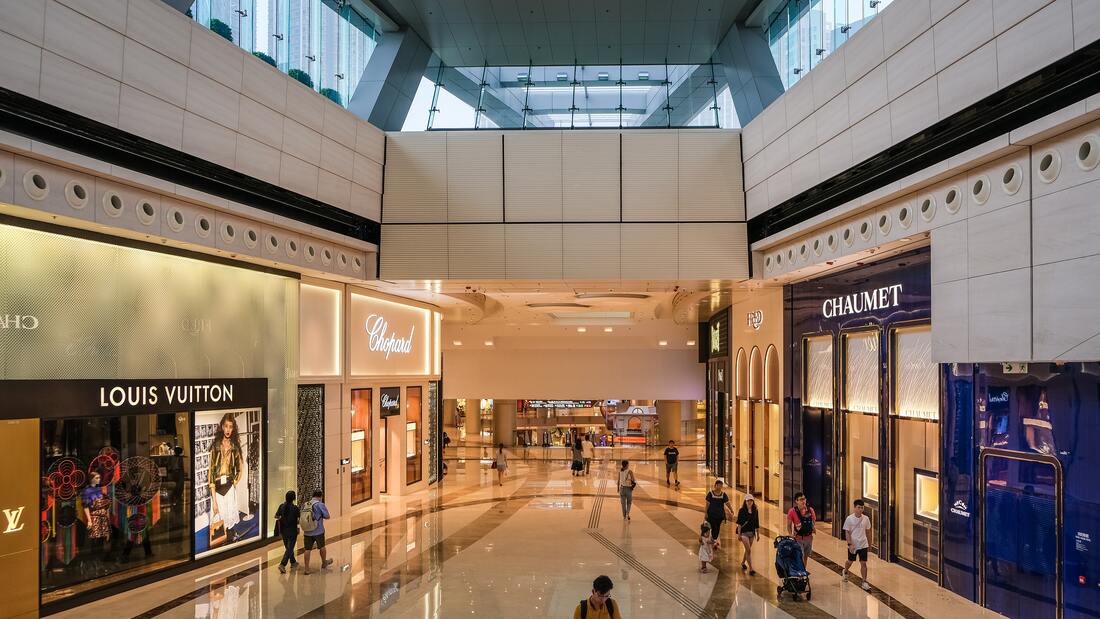|
by Andrew Martineau I’ve always wondered why Shopping Malls didn’t market themselves like a Big-Box Retailer. Both are usually indoors, both occupy an enormous amount of physical space, and both offer a variety of products to its customers. We can certainly argue that the most significant difference is that a Big Box Retailer is mostly a single housed store that offers one-stop, purposeful shopping to clients at usually lower prices, and a shopping mall provides multi-store shopping at prices set by each retailer with many opportunities for gathering and leisure. I’m certainly simplifying things a bit, but humor me for a bit. The Big-Box Retailer - Target is poised to be a top e-commerce player in 2020, notwithstanding the effects of the coronavirus. They have become the 8th largest e-commerce player in the U.S, according to eMarketer’s latest market share rankings and have figured out a robust e-commerce strategy that gives its customers options to purchase either online or offline. Now, of course, store renovations, in-store pickup, drive-up and delivery with Shipt (recently acquired by Target) has something to do with their rise to the Top 10, but shopping malls can adopt all these strategies in a very similar way. If shopping malls were to up their e-commerce game, or have one, to begin with, their retailers could use their brick-and-mortar locations to fulfil additional online orders and the many mom-and-pop retailers that are in all B & C malls that don’t have a website, can benefit from the digital strategies of a powerful e-commerce platform at their respective mall locations. Not to mention, being able to analyze customer behavior by getting real-time updates of popular categories, searches and products that could influence tenant mix for leasing agents to prospect in the future. It is certainly understandable that revenues from e-commerce sales on a shopping malls website are going to be less profitable than a Big Box Retailer. Still, if they were to mimic the compensation structure of an Amazon seller which can range from $0 to $39.99 per month for Account fees, and 6% to 20% of the product’s selling price for Product fees, with the average seller paying 15%, it can be a tremendous boost to every mall’s bottom line and allow for continued sales in Pandemic situations, like the one we find ourselves in today.
Malls have always been a good reflection of American Culture as they provide a place for gathering and enjoying experiences. But, American Culture along with the rest of the world has undoubtedly gravitated to spending quite a bit of time online as opposed to a physical location, and malls never really invested a ton of time or money in joining them. We can certainly see what not investing much in a digital presence has done for many Big-Box retailers looking to catch up with Amazon and in a smaller sense what it has done to traditional retailers that are still working on perfecting their digital presence. And while many brick-and-mortar retailers play catch up, Amazon is getting into the brick-and-mortar game and able to leverage their dominance of online to leverage their learning curve for brick-and-mortar. So how do Shopping Mall owners adapt to a rapidly changing online world and leverage their real estate assets spread across the country to compete? Invest significantly in Digital Operations! Not just by building Digital Teams that figure out creative strategies and applications to enhance the offline/in-mall experience, but to Teams that can create a proficient and competitive online/e-commerce experience. They should even explore, cloud computing, digital streaming (more on this in another post) and artificial intelligence, much like the Big Four technology companies Amazon, Google, Apple and Facebook. Shopping Malls are certainly uniquely positioned to come out the winners in the retail environment of the future if consumers can shop seamlessly across online and offline channels of which shopping malls have in spades. Shopping center GM’s, Marketing Director’s and Asset Teams know the mall business inside and out, and most of them have been honing their skills in the industry for decades. Focusing on building teams that understand the online space is a crucial pivot for shopping mall owners wanting to survive, especially in the wake of COVID-19, significant drops in already declining traffic and continued retail bankruptcies. If shopping malls reconfigured their service courts to allow for retailers to operate as mini-fulfilment centers for a mall’s e-commerce platform as well as the retailer’s, there would be many benefits including savings on shipping, improved delivery speed and allowing retailers to fulfil orders even when their fulfilment center is out of stock. To accomplish this, malls could overhaul their Customer Service offering to include bringing online orders outside and loaded into cars and coordinating same-day delivery for customers within the primary trade area. It will not only create an additional revenue stream for the mall and its respective retailers but allow the mall Customer Service staff to form a personal bond with its customers. All in all, shopping malls are still the destination of choice to get the perfect mix of offline experiences in the form of movie theaters, restaurants, gyms, and retail stores all in one place. But the industry’s survival lies in changing customer behavior by providing seamless integration across a digital and physical shopping environment thereby creating omnichannel synergies, that will develop into a deeper loyalty with the customers, increased spend both with in-store and drive-up business (which will also increase in-mall traffic), and the mall’s overall NOI goals.
0 Comments
by Andrew Martineau As shopping centers, who have already been in the process of reinventing with a growing list of store closures, over-leveraged retailers, bankruptcies, delayed effects of the Great Recession, and increased online shopping try to survive. This pandemic comes out of nowhere and makes the once-popular Experience Economy, void of the very Experiences that made it a strategy for driving traffic and attracting and retaining customers.
Over the last couple of years, the industry had some great success with adding more entertainment options to their merchandise mix in the form of bowling alleys, restaurants, bars and other socially-oriented businesses. However, in a pandemic such as this, those businesses will find it hard to survive even when the malls reopen, and people start venturing out again. What will be the new addition to the tenant mix that would offer something to consumers that they can’t obtain online? I believe that the new category is Wellness. If there is one thing that the Coronavirus has taught all of us is that being healthy is more important now more than ever. The very nature of a hugely contagious virus affecting the innate mechanisms that make us social beings is a wake-up call for everyone, especially ones with largely manageable pre-existing health conditions like diabetes or being overweight. According to a report by Collier’s International titled The Fountain of Wellness in Retail: Transforming the Consumer Healthcare. The Wellness category in an ideal position to become the mini anchor to backfill vacancies and reinvent the merchandising program of many shopping destinations. This developing category may be the best antidote to an industry plagued by store closings, lost business and revenue, as people make the decision to do more of their shopping online and leave in-person experiences to those that are necessary or something that can add to their general Wellness. In a recent ICSC Research for which Engine Insight surveyed 1,004 U.S. Adults. Fifty-seven percent welcome shops whose products are mainly infused with CBD, such as oils and lotions for personal care and Wellness. Fifty-five percent welcome legal cannabis dispensaries for all types of use. Thirty-two percent of consumers surveyed would be more likely to visit a shopping center if its tenants include a CBD shop, and thirty-five percent would be more inclined to visit a shopping center with a legal dispensary. Read the full report from ICSC Research here. Being confined to your home for this long certainly has people itching for socialization, but where that socialization happens is going to be something that will happen organically or directed depending on what the options are. B and C malls (if they haven’t already done so) should double down on adding Urgent Care Clinics, Dental Offices, Grocery stores and other essential services to their tenant mix. The multi-category successes of entities like Walmart and Target during this pandemic are great examples of this - with health, food and cleaning supplies categories making up for losses in other areas - and what is a shopping center if not a multi-category shopping destination. In addition to yoga studios, gyms, psychologist offices, physiotherapists offices, massage businesses, wellness spas, supplement shops and CBD-product merchants, malls should look at adding more health-related tenants and activities to the mix. Food Courts with more healthy foods should be considered, along with adding mile marker floor decals for in-center walking and converting parking on the perimeter of centers to green space for rediscovering how much taking a walk in nature renews our spirits and nurtures our soul. It is a fact that many cities and urban areas across the country suffer from a lack of green space, and if a visit to the local mall can provide that. It would certainly be something to invest some time and energy into - think grabbing a meal from the food court and eating it outside with nature, or doing some exercise in the morning and grabbing a smoothie or doing some shopping in the mall afterwards - the possibilities are endless, and the future is Wellness. |
AboutDisruption Retail is the official Thought Leadership platform for UniteUs Retail. Archives
May 2020
Categories |
|
Privacy Policy
Terms of Use Take down policy |
HoursM-F: 10am - 6pm
|
Telephone954-850-8581
|
© 2020 Disruption Retail - part of UniteUs Agency, a UniteUs Group Company. All rights reserved.




 RSS Feed
RSS Feed